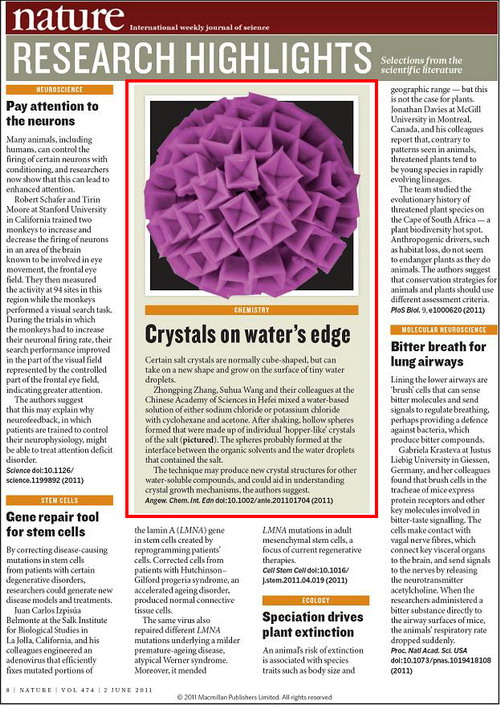The NaCl hollow microsphere is built up of blocks of cubic hopper-like single crystals
The spectacular spherulite seen in this colorized scanning electron micrograph is none other than table salt, or sodium chloride. The structure is something of a departure for NaCl, which almost always forms cubic crystals. This new ability to grow salts in unusual shapes could help researchers figure out how to improve control of the crystallization of water-soluble compounds.
Researchers led by Zhongping Zhang and Suhua Wang, of the Chinese Academy of Sciences’ Institute of Intelligent Machines discovered they could coax NaCl and its chemical cousin KCl into the surprising structures when they grew the crystals at the interface of metastable water microdroplets and an organic solution of cyclohexane and acetone (Angew. Chem. Int. Ed., DOI: 10.1002/anie.201101704).
Each hollow sphere is composed of dozens of single crystals shaped like hoppers, or square funnels. The spherulite pictured here is made up of crystals 10 μm across.
Cyclohexane appears to play a critical role in the crystallization because only cubic crystals form when it is absent from the solution. Zhang, Wang, and colleagues think that cyclohexane stabilizes the water microdroplets by reducing diffusion of acetone into the water. Once the acetone does diffuse into the water, the salt solution becomes supersaturated and crystallization begins. But cyclohexane outside the droplets curtails crystal growth. As a result, the hopper-shaped crystals form, arranged in a hollow microsphere.
- Chemical & Engineering News
- ISSN 0009-2347
- Copyright © 2011 American Chemical Society

This study is highlighted as a featured story in a recent issue of Nature.